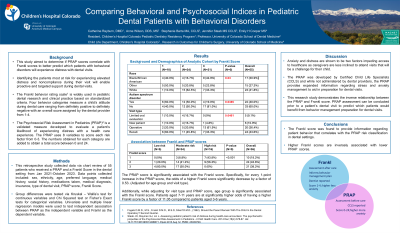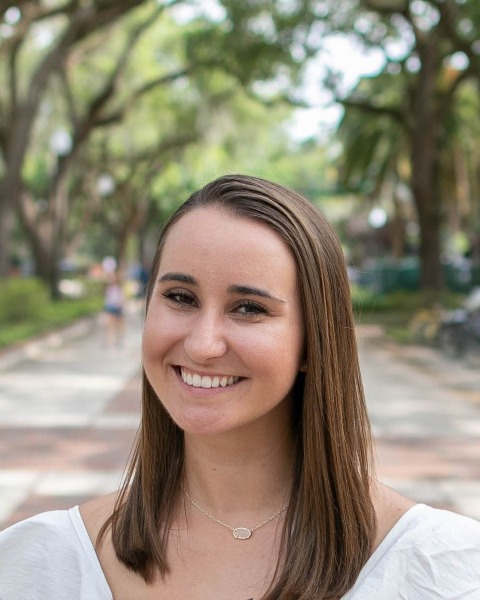Patient Management
Comparing Behavioral Indices in Pediatric Dental Patients with Behavioral Disorders
42 - Comparing Behavioral and Psychosocial Indices in Pediatric Dental Patients with Behavioral Disorders


Catherine Rayburn, DMD (she/her/hers)
Resident
Children's Hospital Colorado, Aurora, CO
Children's Hospital Colorado
Denver, Colorado, United States- ST
Suhong Tong, MS
University of Colorado School of Medicine
- AC
Ally Calderon, None.
University of Colorado School of Medicine
- SW
Samantha Wilson, MS
University of Colorado School of Medicine
- SB
Stephanie Barta, MA, CCLS
Children's Hospital Colorado

Jennifer Staab, MS, CCLS (she/her/hers)
Clinical Practice Specialist
Children's Hospital Colorado- AW
Anne Wilson, DDS, MS
Children's Hospital Colorado
Aurora, Colorado, United States - AW
Anne Wilson, DDS, MS
Children's Hospital Colorado
Aurora, Colorado, United States 
Chaitanya P. Puranik, B.D.S., M.S., M.Dent.Sci., Ph. D. F.A.A.P.D., Diplomate (he/him/his)
Residency Program Director
Children's Hospital Colorado
Children's Hospital Colorado and School of Dental Medicine, University of Colorado Anschutz Medical Campus
Aurora, Colorado, United States
Presenting Author(s)
Co-Author(s)
Research Mentor(s)
Program Director(s)
Purpose: The study aimed to evaluate the predictability between the Frankl score and Psychosocial Risk Assessment in Pediatrics (PRAP) score in the pediatric dental setting. The PRAP is a validated instrument identifying risk for elevated distress/anxiety in pediatric patients as used by Certified Child Life Specialists in the healthcare environment.
Methods: Patients (N=55) of record were assessed in a retrospective analysis. Patients were aged 0–18 years old and classified by age in years: 0-5, 6-11, and 12-18, PRAP scores were analyzed as a continuous variable and class variable classified as 0-7, 8-14 and >15.
Patient demographics and baseline clinic characteristics were analyzed using median and interquartile ranges for continuous variables and frequencies and proportions for categorical variables. Data were summarized as overall, then by Frankl and PRAP scores. Group differences were tested via Kruskal – Wallis’s test for continuous variables and Chi Squared test or Fisher’s Exact tests for categorical variables.
Univariate and multiple linear regression models were used to test for an independent association between the PRAP (dependent variable) and Frankl score. Other variables were analyzed for an association with either the Frankl or PRAP scores selected as covariates for multiple linear regression and the final model was determined by the ‘best’ model fitting criteria.
Results: An inverse relationship was demonstrated between Frankl and PRAP; higher Frankl scores were associated with lower PRAP scores (P < 0.0001).
Conclusions: Frankl and PRAP scores both have value as predictors of distress and anxiety and are useful aids in pediatric dental settings.
Identify Supporting Agency and Grant Number:

.jpg)